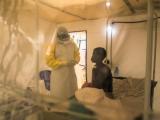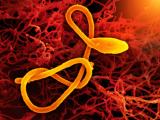Oct 13, 2008 (CIDRAP News) – The World Health Organization (WHO) said today that preliminary tests indicate that an arenavirus—possibly a previously unknown one—is responsible for the mysterious febrile disease that killed three people in South Africa and has now sickened a fourth.
The tests were conducted at South Africa's National Institute for Communicable Diseases (NICD) and at the US Centers for Disease Control and Prevention (CDC), the WHO announced in a statement today.
Janusz T. Paweska, who heads the NICD's special pathogens unit, said the tests were done on skin, liver, and muscle tissue from two healthcare workers who died after they had contact with the index patient, according to a report yesterday from The Mercury, a newspaper based in Durban, South Africa. He said tests on blood samples from the index patient, a woman from Zambia who got sick while on a safari and died in a Johannesburg hospital on Sep 14, also detected the virus. (A previous report from the NICD said no samples from the patient had been available.)
Further testing to better characterize the arenavirus is underway at the NICD and the CDC, the WHO statement said. Lucille Blumberg, head of the NICD's epidemiology and outbreak response unit, said it remains to be learned whether the virus is a previously unrecognized member of the arenaviruses, according to the Mercury report.
The latest confirmed case in the cluster is in a nurse who became ill after close contact with one of the earlier victims. The WHO said the nurse's infection was confirmed by polymerase chain reaction (PCR) testing in South Africa. The patient has been hospitalized, and authorities have identified and are monitoring her contacts.
The nurse has a febrile illness and thrombocytopenia, according to Blumberg, who commented on the case today in a post on ProMED-mail, the online reporting system of the International Society for Infectious Diseases. She said the patient is being treated with ribavirin, a drug that is effective against Lassa fever but has unknown efficacy for the current arenavirus.
Members of the arenavirus family are associated with rodent-transmitted diseases in humans, and a number of them can cause hemorrhagic fevers, according to information from the CDC's Special Pathogens Branch. An earlier WHO statement said the patients who died had some symptoms that suggested a viral hemorrhagic fever (VHF), but bleeding was not a marked clinical feature.
Members of the arenavirus family are divided into two groups—Old World and New World—depending on the mouse reservoir species. Five arenaviruses have been known to cause disease in humans. Four of them are primarily limited to South America, and one, Lassa virus, is found in much of West Africa, according to the CDC.
Arenaviruses are typically spread to humans through contact with urine or feces of infected host animals, such as eating contaminated food or contact with abraded skin. Lassa and Machupo arenaviruses have been associated with secondary person-to-person or nosocomial infections, typically through direct contact with blood or other secretions, according to the CDC.
Charles H. Calisher, a former viral disease moderator on ProMED-mail, wrote in a ProMED post yesterday that scientists are eager to learn if the arenavirus that caused the recent infections represents a new type or a variant of a previously recognized arenavirus. Calisher is a professor in the Department of Microbiology, Immunology, and Pathology at Colorado State University in Ft Collins.
Blumberg, in her ProMED post today, commented that arenaviruses have been found in South African rodents in the past, but they have not been known to cause disease in humans.
See also:
Oct 13 WHO statement
CDC fact sheet on arenaviruses
CIDRAP overview on viral hemorrhagic fevers


















